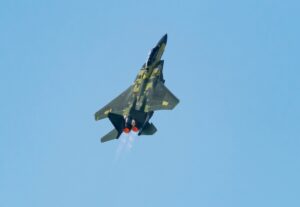
Boeing's [BA] F-15EX fighter had its first flight on Feb. 2 in anticipation of "early delivery" of the first two jets to the U.S. Air Force later this quarter, the company said. Matt "Phat" Giese, Boeing's chief test pilot, flew the plane for 90 minutes before returning to land at St. Louis Lambert International Airport, Boeing said. Last July, the Air Force awarded Boeing an almost $1.2 billion contract for the first lot of eight F-15EX fighters. Under the terms…














